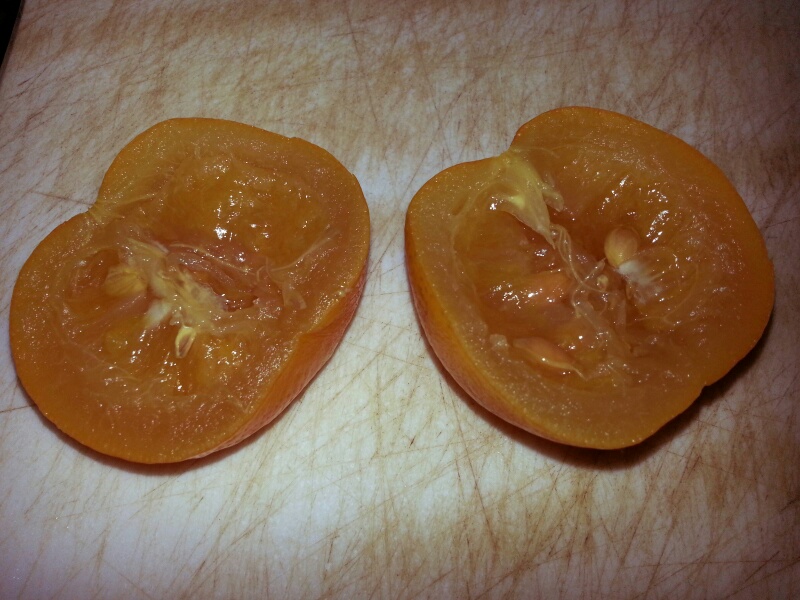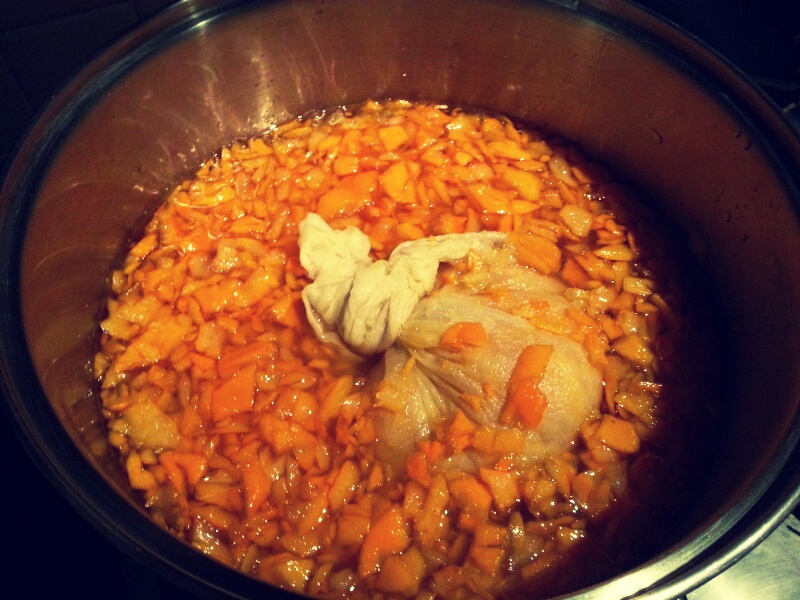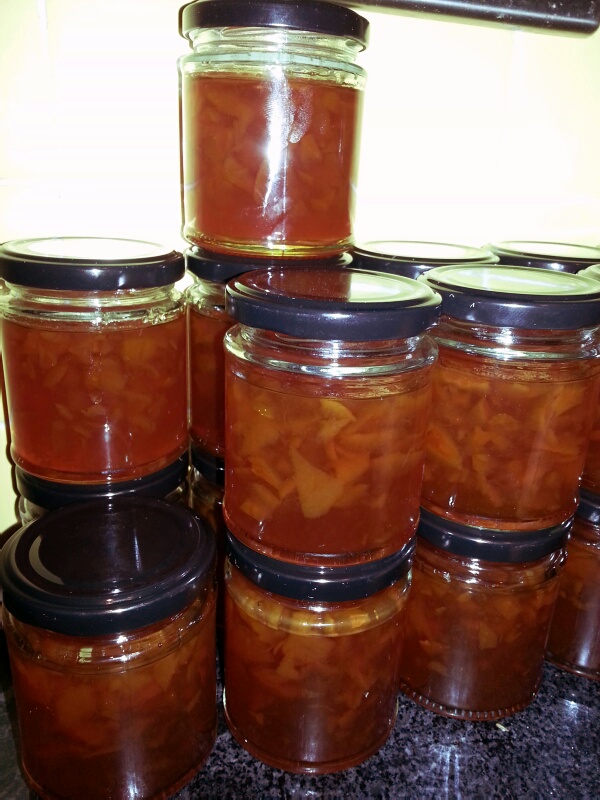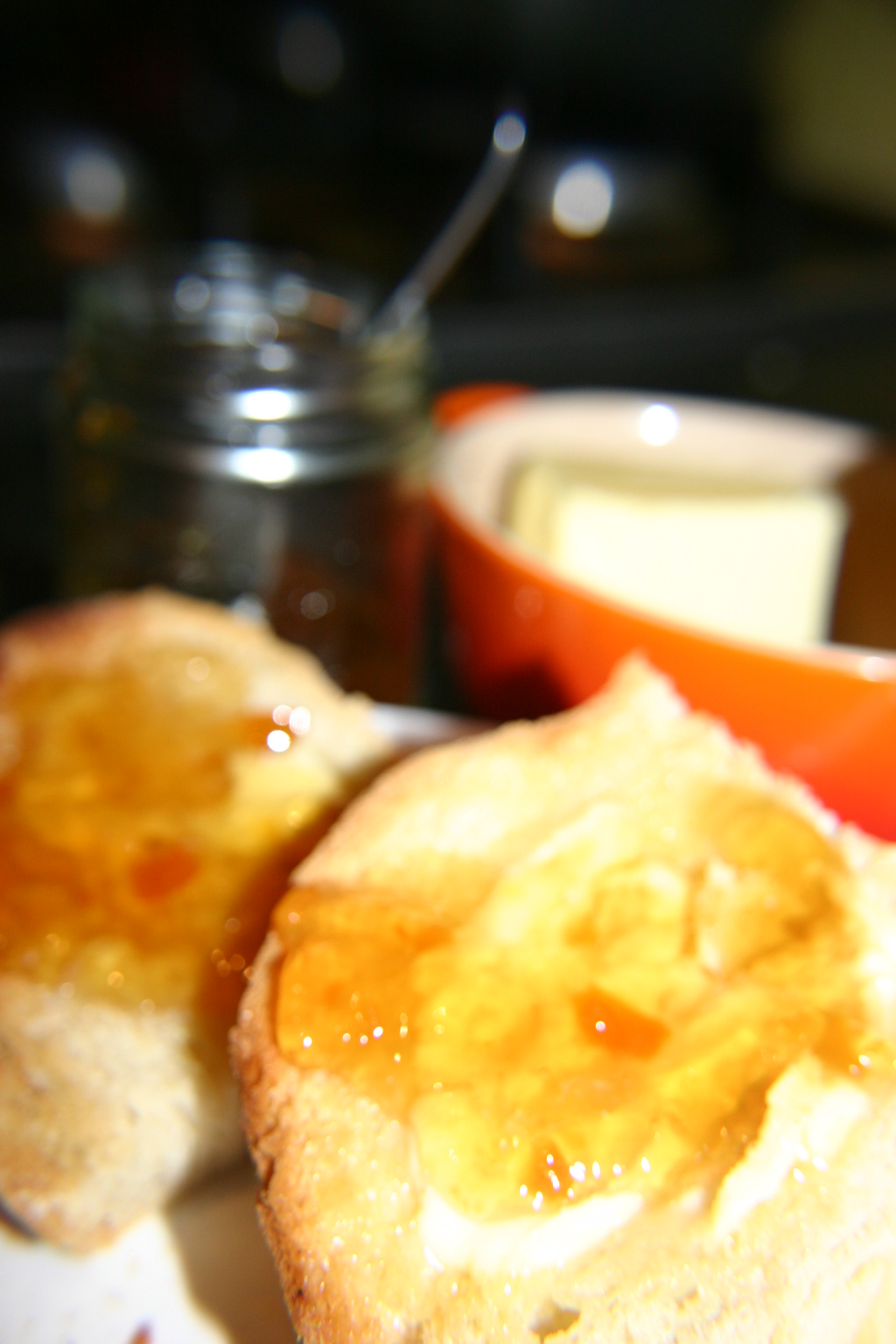The weather outside may be miserable and the evenings still long, but luckily there is a little fleeting sunny surprise popping up in grocers around the country that can perk us up no end; at least if you know where to find them. It is Seville orange season and a small window of just a few weeks is all we have to cook with this delicious fruit.
The Seville orange is very bitter and is only really grown in Spain for us British to make our Oxford marmalade. What a treat home-made marmalade is; oranges, water and sugar that is all that are needed to produce such a delightful, very British preserve. If you have never made your own, have a go before they are all disappear again.
Like all citrus fruits, the Seville orange comes originally from China. It was imported on trade routes via Italy, to the Mediterranean countries of Europe. All of these original orange trees were bitter in flavour like the Seville. In the first half of the 17th century, sweet orange trees were delivered to the Portuguese coast by ship. These sweet oranges quickly superseded the bitter ones, that is for that small area of Spain that still grows them.
The flowers of Seville oranges are also used to make orange flower water, another of my favourite ingredients.
Rabbit with Red Legged Partridge and Seville Orange by Jean-Baptiste Chardin 1728-29
Below is a recipe for Seville orange marmalade, but it is useful to know that the zest and juice of these oranges go very well with game and some shellfish such as scallops as the above painting shows.
If you like the blogs and podcast I produce, please consider treating me to a virtual coffee or pint, or even a £3 monthly subscription: follow this link for more information.
Seville Orange Marmalade
Oddly enough, marmalade was not made from Seville or any other orange at first, but quince (a knobbly cousin of apples and pears). It did come from Spain though, in fact the Spanish word for quince is marmalada. Every day’s a school day.
This recipe is Jane Grigson’s and it is a good strong bittersweet ‘Oxford’ style marmalade.
Ingredients
3 ¼ litres water
1 ½ (3 lb) Seville Oranges
3 kg (6 lb) granulated sugar
Give your oranges a good scrub and place them in a preserving pan or large stockpot with the water. Bring to a boil and simmer for about 1 ½ hours until the oranges are tender.
Take them out with a slotted spoon. They will probably collapse in on themselves, but don’t worry about that. Let them cool a little, then halve them and scoop out their innards. Tie up the scooped-out pulp in a piece of muslin. If you want a soft set, just put the bag of pulp straight into the pan, if you want it well set, give it a good squeeze to get as much pectin out of the pith and into the liquor as possible (I’m a soft set man).
Next, shred the peel, you can be as careful as you want, and you can cut them as thick as you want. You can do this by hand or in the food processor by blitzing them using the pulse setting – be careful though, you don’t want a load of slurry. I’m usually dead against using food processors for this sort of thing, but I quite like the irregular pieces you get with this method. Tip them into the pan along with the sugar. Over a medium heat, stir until the sugar dissolves.
Now you need to be brave and bring it to a full rolling boil for at least 15 minutes , you need it very hot so that the marmalade can set. You have several options to test for a set, but I use a combination of a sugar thermometer and the wrinkle test. Pectin – a chemical that essentially glues plant cell walls together – will set to a gel at 105⁰C (221⁰F), so a thermometer is crucial if you want to know if you are getting close. It can take a while because water needs to evaporate to get five degrees above boiling point. Keep a close eye on it and when it gets close do the wrinkle test. For this test put a side plate in your freezer a little while before you want to make your marmalade, and when you’ve achieved 105⁰C (221⁰F), turn off the heat and spoon out a little of it onto your cold plate. Return it to the freezer for a couple of minutes. Push the jelly; if it wrinkles up, your pectin is set. If not, boil up again and retest after 10 minutes.
When ready, turn off the heat and allow it to cool for 15 minutes – this important step will stop your peel from floating to the top in a single layer – then pot into sterilized jars (bake them and their lids for 25 minutes at 125⁰C or 250⁰F).








Pingback: The Original (Quince) Marmalade | British Food: A History
An interesting article. There is a small mistake though; mErmElada is Spanish for jam, the Spanish word for Quince is membrillo.
LikeLike
Thanks Rob – I speak no Spanish and so had to take my reference as gospel! I like to be right, so thanks very much…
LikeLike
It has been my understanding that it actually comes from the Portuguese word for quince — marmelo.
LikeLike
Yes indeed – I mention it in the next post – for Quince Marmalade!
LikeLike
Sorry if this is a stupid question, but is it ok to just use granulated sugar or is it better to use preserving sugar?
LikeLike
Hi Jan. Use granulated! It’s a waste of money buying preserving sugar. I can’t see the difference between the two.
Thanks for your question
LikeLike
Fab, thank you for that. I made some marmalade using Seville oranges the other day, followed my recipe exactly (which was very similar to yours). My preserving pan wouldn’t ‘roll boil’ properly so the first time I put the marmalade in the jars it was really liquid although I did boil it for just over 15 minutes. I put it all back in the pan, washed out the jars and warmed them again and boiled it for another 15 minutes. I wondered whether there was still to much juice and it needed the extra time to thicken – does this sound right? Hope you don’t mind me picking your brain!
LikeLike
It sounds like you had too much water. The pectin won’t set unless you reach 105 degrees C. For that, you need the amount of syrupiness. Your best bet is to put a drop of the marmalade on a freezing cold plate, let it cool for a minute in the fridge and push it with your finger. If it wrinkles, it’s ready!
LikeLike
That’s what I did – and I think I’ve got a fab success this time around. Mind you last week I tried making grapefruit and sweet orange marmalade – first two lots ended up like toffee so haven’t tried that again – really not sure where I went wrong. Is it imperative to have exact quantities according to the recipe? It’s the only thing I can think of as the grapefruit were quite large and very juicy
LikeLike
The only thing I can think if is that you simmered the marmalade and didn’t boil it up so that the pectin couldn’t set but the water evaporated. I think a similar thing happened to me when I first started making preserves. You’ve gotta be brave with that boil!
LikeLike
Thanks so much for all your help this evening. I’ve only just started making marmalade and it seems to be a bit hit and miss at the moment but I’ll keep on trying! Hope you have a good evening
LikeLike
You’ll get it! I’m going to be writing a preserve-making post after the success of my stock-making one
LikeLike
Brilliant – will enjoy reading it – thanks for taking the time to reply to all my queries this evening
LikeLike
Yes also as the product is grown and originates from Spain it is Spanish Marmalade, not English ….
LikeLike
Ah, but it is made in England by an English recipe! Do the Spanish eat Seville oranges? I heard that they are grown purely for the British….
LikeLike
Dear buttery77,
I just came across your blog while searching for info on the Seville oranges. I thought I should share this with you. I found out today that the Seville is very similar to Grapefruit in that it is a big “No No” if one is taking Lipitor. It causes the drug to become very potent in your system. Your blog helped me a lot to recognize the Sevilles. So I now know they are not easy to find which is great for me. But for those out there that are on Lipitor they need to beware. Cheers,
Dee
LikeLike
Thanks for that Dee. It’s funny, I have a medicine that I can’t have grapefruit with. I’d better check that I’m ok with Sevilles!
LikeLike
A query. So much other fruit – and veg – is available all year round these days, why are Seville oranges only in the shops for such a short time?
LikeLike
Hi Janet. Thanks for the question…
My guess would be that they a simply a niche fruit… You can’t just eat them like dessert fruit, you have to cook them , and even then, they’re so bitter they have to be watered down (in the case of marmalade) or used sparingly (in a rabbit casserole). Once sweet oranges were cultivated, who’d be interested!? People just further developed the sweet types. It’s just like other fruits such as quince, crab apples and wardens (cooking pears). If you can’t eat them there and then, people aren’t interested.
That said, about 10 ten years ago, I’m pretty sure Seville orange season was only about 2 weeks in January, but now I see them at the start of December right up to February.
LikeLike
In first para, when you simmer for 1 1/2 hours until oranges are tender, should the pan be covered or uncovered???
Quick reply would be appreciated,as I’ve already put the pan on!!!
thanks. liz
LikeLike
Lid off – hope i’m in time [i’m sure it wouldn’t matter really, it’d just take a bit longer to reach a set….
LikeLike
Thanks so much for some of the background to the Seville orange – I’m recently back from Iran where there were a lot of citrus grown in the so-called paradise gardens but, we were told, a bitter orange. Hence, I’m on the track for some history. As a by the way, when I was a young traveller in Seville I spotted oranges on street trees and couldn’t figure out why no one had picked them. One bite told me why! My mouth dried up instantly. We had to laugh.
LikeLike
Haha. Thanks for your comment. I often set up friends, giving them bitter oranges instead of sweet ones. Childish I know, but i don’t get out much
LikeLike
Pingback: Bitter oranges | Sandra's Garden
Wrong spanish !! Quince is membrillo o dulce de membrillo ! The translation for marnalade is “mermelada” but in spanish We don’t maje ditinction Between marmalade and jam. For us any preserve done with sugar and fruto is called MERMELADA
LikeLike
Thanks for the correction Jose. My Spanish is very poor indeed, so I’m glad you cast your eye over my post!
LikeLike
Can I use a bitter ornamental orange to make this marmalade?
LikeLike
Hi Tabitha. Yes I’m sure you could…as long as they are edible. Is there such a thing as a poisonous orange!?
LikeLike
Do you have any research on Carrot Marmalade?
LikeLiked by 1 person
I did make it once, but it didn’t turn out great. This was many years ago now, and I think I have spotted better recipes since. It’s on my list to make again. I don’t think that answers your question, but thanks for asking it!
LikeLike
After boiling for one and a half hours the 3 1/4 liters has considerably reduced – should more water be added to the sugar and cut rinds of oranges?
LikeLiked by 1 person
No, don’t add add any more water. The reducing helps the pectin set. Sorry for the belated reply!
LikeLike